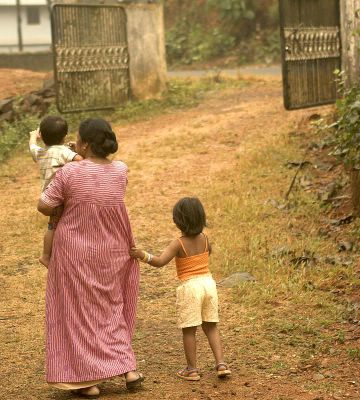
Rekha signs the registry - -
Abe Pachikara, Copyright 2005 (click for larger image)
Sometimes one sees both a goal in the distance, AND the work needed to get there and still says, "Yup let’s do it." Even when one has the sneaky suspicion that daunting obstacles may come out of the woodwork.
So it was the case for Molly’s cousin Rekha. You see, she meets this man, and somewhere along the way, man oh man, she decides that he’s THE man.
But there was a catch – his family was (and is) Jacobite ( http://www.answers.com/Jacobite%20Church ) which in many instances would be inconsequential but… hers was (and is) Catholic. All are Christians, but it is one of those important nuances, one that matters. Particularly to the parents, who were pretty keen that each keep their current denomination – a reasonable request to expect from anyone who believes in their own faith.
As you may suspect, one converted - - in this case, it was Rekha. And after I had a chance to meet her man, Jomy, well, it seemed like an awfully good decision. We attended their marriage, my first Jacobite wedding, presided over by none other that the Bishop of Kollam (which is a big deal). And even though I didn’t really understand any of the Malayalam spoken at the function, it was still grand, solemn, and prayerful.






















